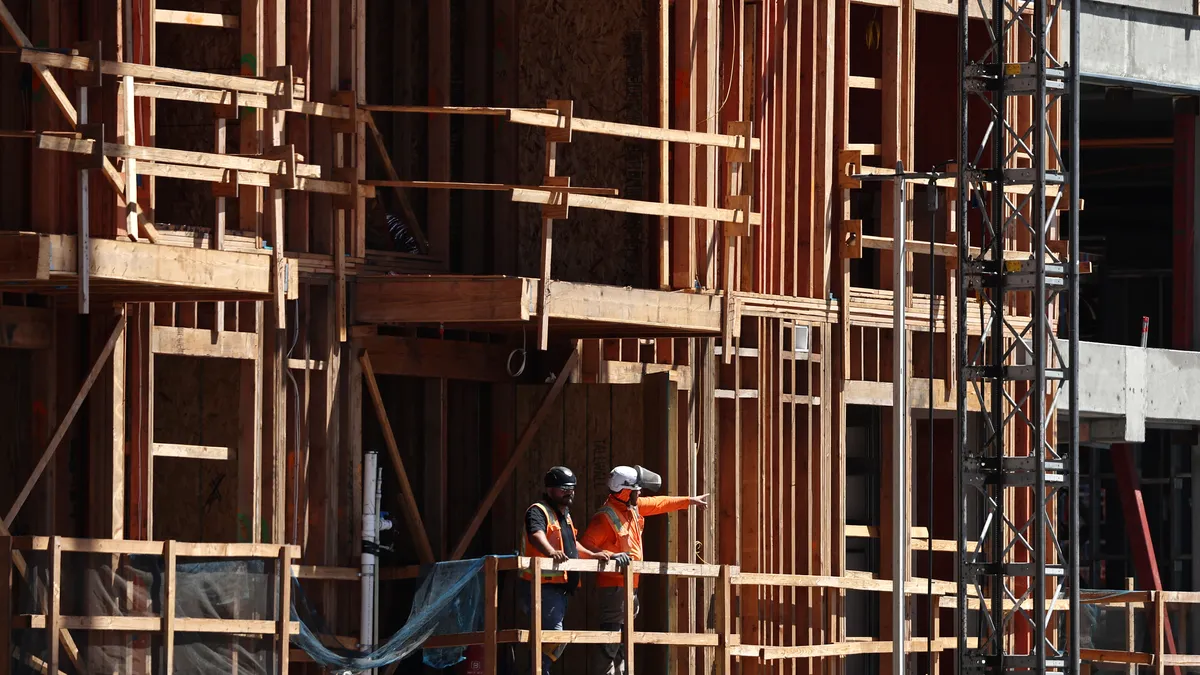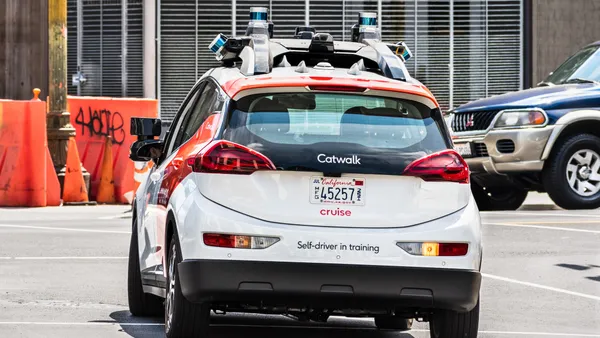The massive data requirements of technology companies like Apple, Google and Microsoft almost seem to be matched by the large-scale data centers cropping up in hubs like Northern Virginia, dubbed "Data Center Alley."
Redwood City, California-based DPR Construction is one builder that has ridden the wave of hyperscale demand, collecting more than $896 million in 2017 data center revenue and landing second on Building Design + Construction's 2018 Top 45 Data Center Contractors list. But that demand is likely to recede in another year or two, Tom Maples, a DPR project executive responsible for advanced technology, told Construction Dive, and in its place will come a need for smaller facilities across the country to support your Netflix habit, as well as increasingly popular technology such as wearable devices, and in the not-so-distant future, autonomous vehicles.
Maples shared his insight on trends in the sector and foresight into what challenges and opportunities may lie ahead for companies of all sizes and U.S. regions.
This interview has been edited for clarity and brevity.
CONSTRUCTION DIVE: There’s been a clear boom in data center activity across the country. What’s behind this trend?
TOM MAPLES: The data center market as a whole is very robust and has active growth, but the leading edge of the growth is in what we refer to as the hyperscale space. The big tech giants have really driven the scale of what we're building. [It] used to be that developers were building 10,000 feet at a time and now they're leasing to these tech giants 60,000 or 90,000 square feet at a time.
But the tech giants are also building for themselves and they are building larger than ever as their own design and construction entity. In both those cases, they have really driven up the size of the form factor and driven down the overall cost of a space in this sector.
The speed to market must be pretty demanding with these types of clients. What are some of the challenges involved in carrying out projects for them?
MAPLES: They are very schedule-driven and they have aggressive rollout programs across the country and across the world. For the most part, the giants are building and leasing at the same time because they don't have enough resources and enough capacity to build enough, fast enough and last through next year’s timeframe.
They have a series of agreements in place with the big vendors, so that takes care of the number one requirement, which is the long lead equipment. Now, the supply chain management has taken away the long pole in the tent, and doubled down on the pressure for scheduled delivery [by] the design and construction partners.
How has DPR adapted to the bigger scale?
MAPLES: We are in touch with the market and we need to know where the market is heading because there is a potential for a very large demand in a very short notice. We have to already have the foundation laid with the local subcontractor community, design professionals, building departments and utilities to be established in the markets where these clients want to go next.
Are there challenges to bringing local companies on board?
MAPLES: There is a learning curve and a reliance on the technically savvy, especially in the mechanical and electrical sectors. There’s also a huge demand for labor, and so it also is demanding 100 electricians to be available in a couple weeks or 50 to 100 mechanical pipefitters [to be] available on short notice. The locals are best positioned often to provide the labor, and in a perfect world they also have the technical expertise. But that [expertise] may be what they need to invest in to be able to benefit from this movement.
Are we approaching the peak for this demand or do you think there’s more space to grow?
MAPLES: There’s more space to grow. Hyperscale is in a very dominant position and will remain like this for maybe two more years as it catches up with demand. Other sectors of the data center market are going to backfill that growth so that the co-location business remains steady for smaller-scale clients that want 10,000 square feet or 1,000 square feet.
The edge market is also ramping up and will take the place of the tech giants in the coming years. An example of edge is content distribution, the internet of things, the smart refrigerator in your kitchen or the smart factory that is being ever more automated and connected. Autonomous vehicles are going to need a phenomenal increase in capacity, and so the edge is going to have big growth and it’ll be less concentrated in the top five markets and more [spread] across the country and distributed throughout metropolitan areas. The other thing that will be coming online is new communication technology for cell phones — 5G.
Are owners requesting prefabrication and lean delivery or is the industry innovating on its own to meet that demand?
MAPLES: I think it's a combination. There are some [firms] that have been progressive in evolving the design requirements, making the electrical and power requirements leaner and being more accepting of more economical and energy-efficient cooling solutions. The power cost is such a driver that being more energy efficient is in huge demand.
They have varying degrees of how much they dictate and how much they are accepting of prefabrication and alternate products. Some of them are rigid in what they're building for themselves — but they're still leasing half of their volume, so they're [able] to be more innovative in what they're providing. That, in turn, has driven a fair amount of the prefabrication as well.











